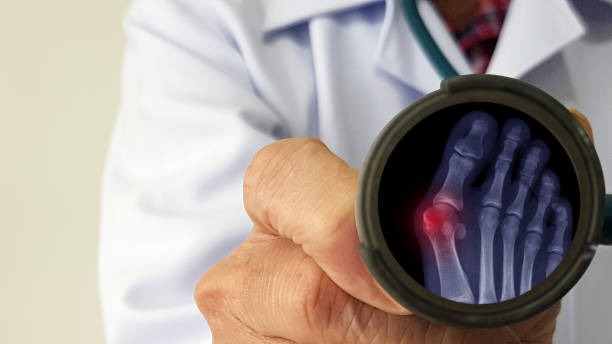Your doctor will take a complete medical history and perform a physical exam. They may also order weight-bearing x-rays to assess the severity of the bunion.
Adelaide Bunion Clinic is intended to provide pain relief and help prevent the bunion from getting worse. Conservative treatments include wearing shoes with ample room for the toes, padding and taping, ice, over-the-counter medications, and physical therapy.

Surgical Options
Bunion surgery is a good option when nonsurgical treatments don’t help or the bunion interferes with daily activities. Usually done as an outpatient, bunion surgery relieves pain for most people but may not get rid of the bump completely. Following your doctor’s postoperative care instructions is important.
Surgery usually involves removing the bunion and correcting the alignment of the big toe. It also may involve reshaping the toe and repairing any damage to the soft tissues around the toe.
Your surgeon will decide which surgical procedure is best for you based on the severity of your bunion, any other foot or ankle problems you have and your age and activity level. They will consider whether you smoke or have any medical conditions that could affect healing.
During traditional bunion removal surgery, which is called a bunionectomy, an incision is made on top or side of the big toe. The bunion is removed along with any bone, tendons or ligaments that are causing the problem. The toe is then realigned and held in place with metal plates, screws or wires that are left in permanently. The procedure is generally done while you are asleep under general anesthesia and lasts about 30 to 100 minutes. You will need to stay off your feet for several weeks, sometimes for up to a year, and you must wear shoes that fit well and have lots of room for your toes. You will need to care for the stitches, which must not be irritated or disturbed.
A more recent approach to bunion surgery is a minimally invasive technique that can be performed as an outpatient procedure. This type of procedure usually requires less pain and a faster recovery time than the standard surgery. In some cases, you may be able to go home just hours after the procedure.
Before surgery, tell your doctor about any medicines you are taking, including vitamins, herbs and supplements. Some of these can make it harder for your blood to clot, which increases the risk of complications after surgery. You should also stop taking any medications you do not need, especially aspirin and other drugs that increase your bleeding risk.
We are proud to offer a groundbreaking bunion surgery that is minimally invasive and does not require an overnight hospital stay. This revolutionary new surgery is designed to provide you with fast relief of your bunion pain and allow you to return to your daily activities as quickly as possible. Contact us today to find out if you are a candidate for this innovative procedure! We look forward to helping you get back on your feet!
